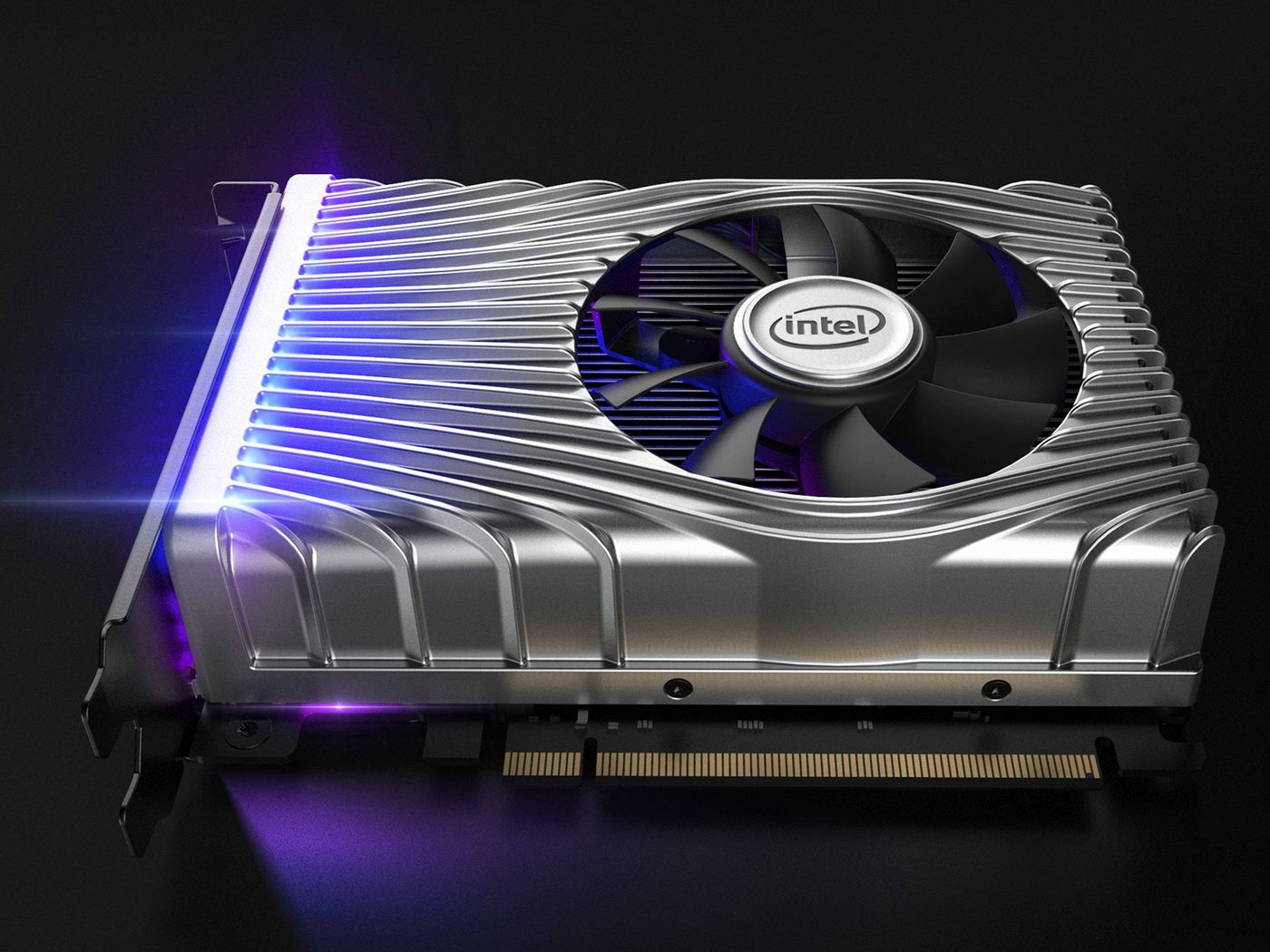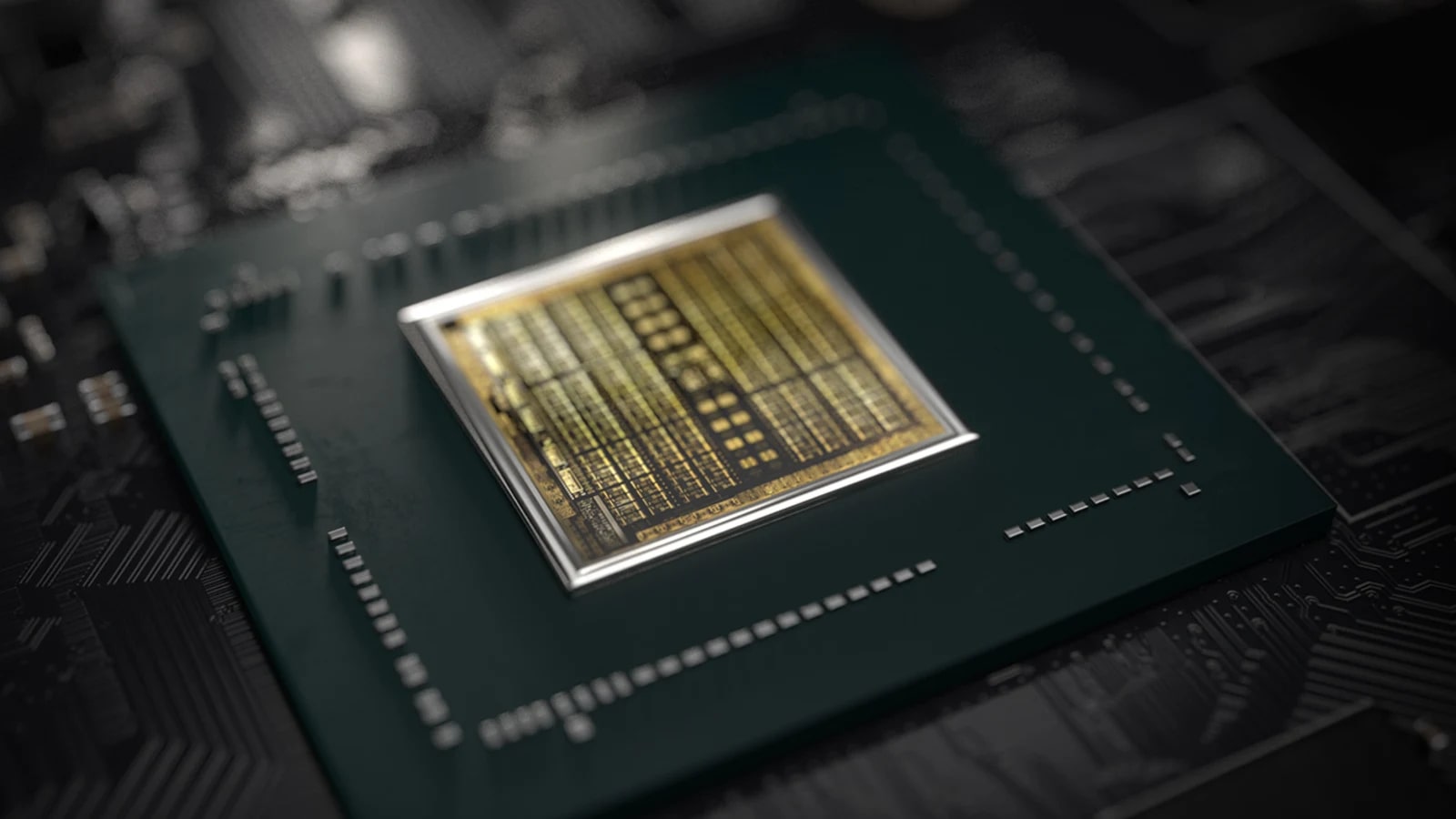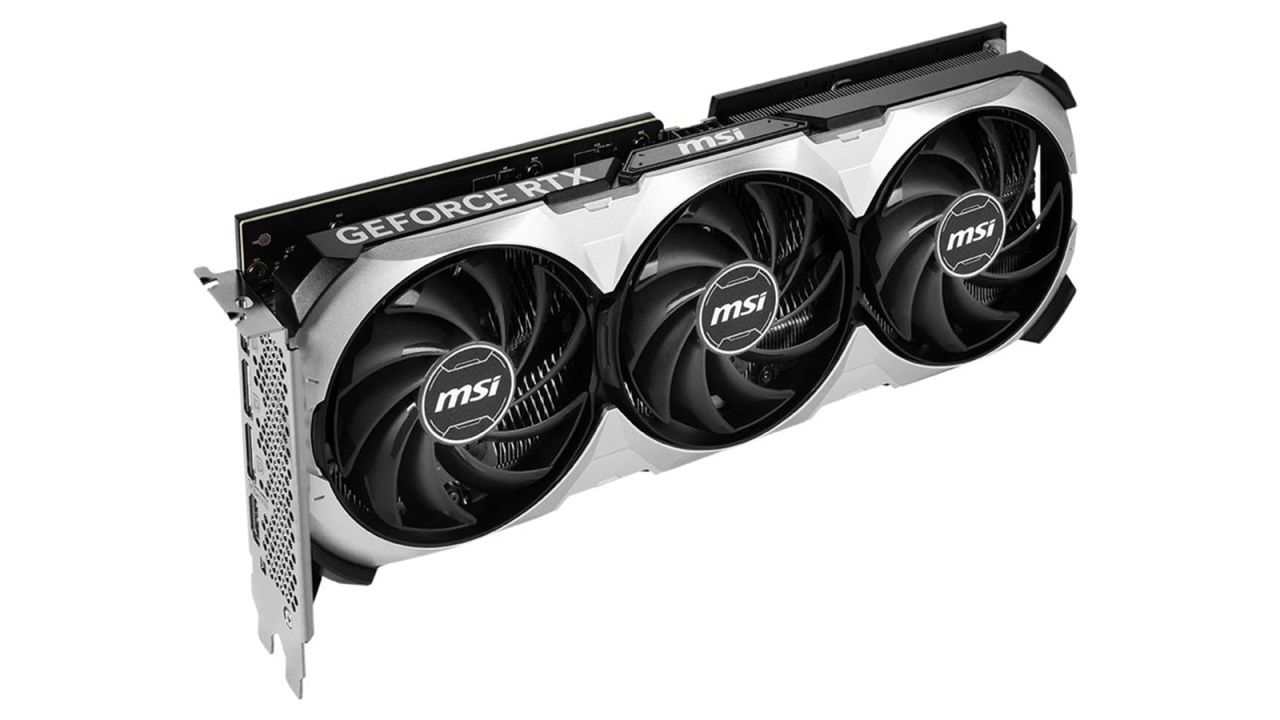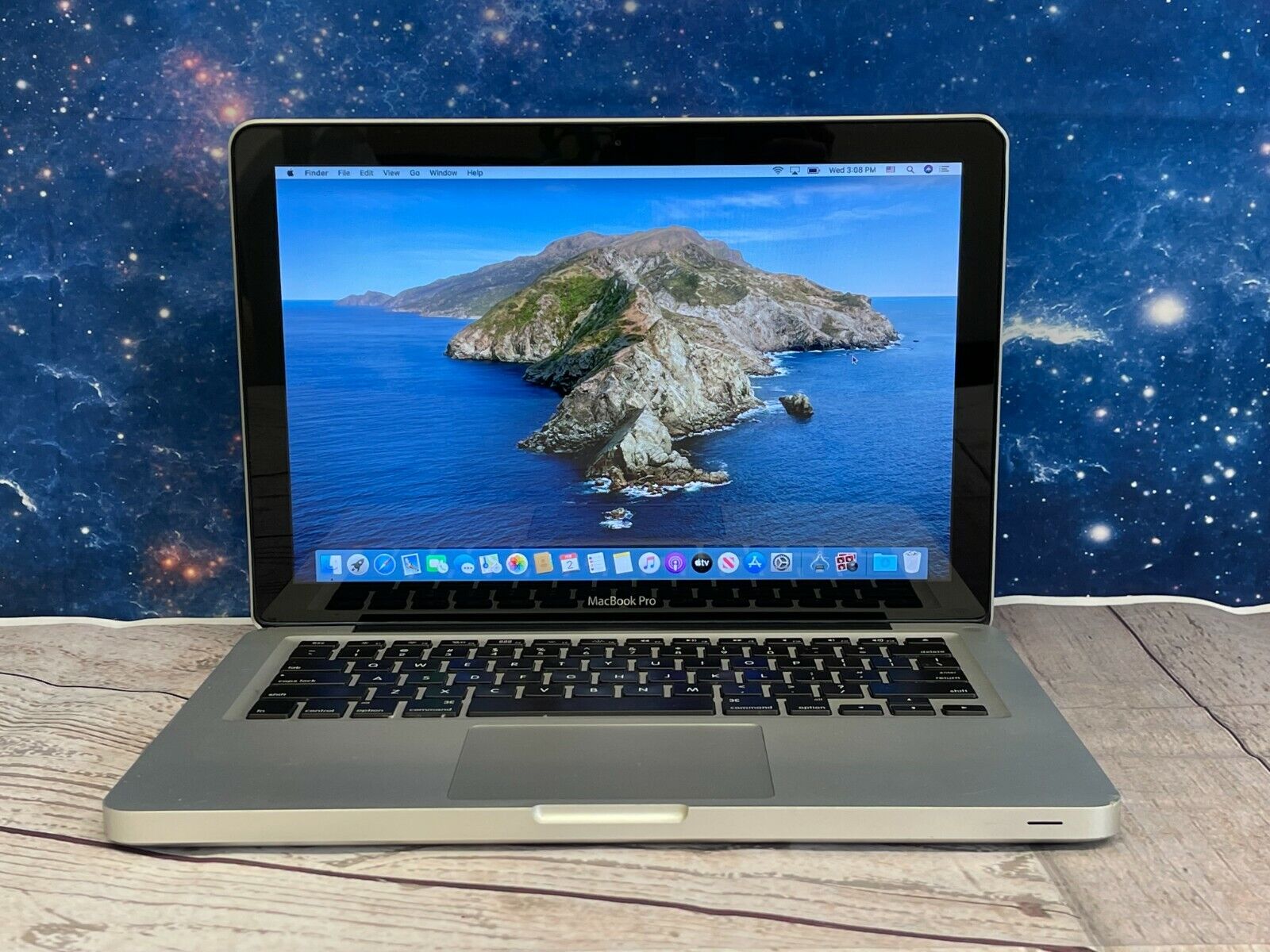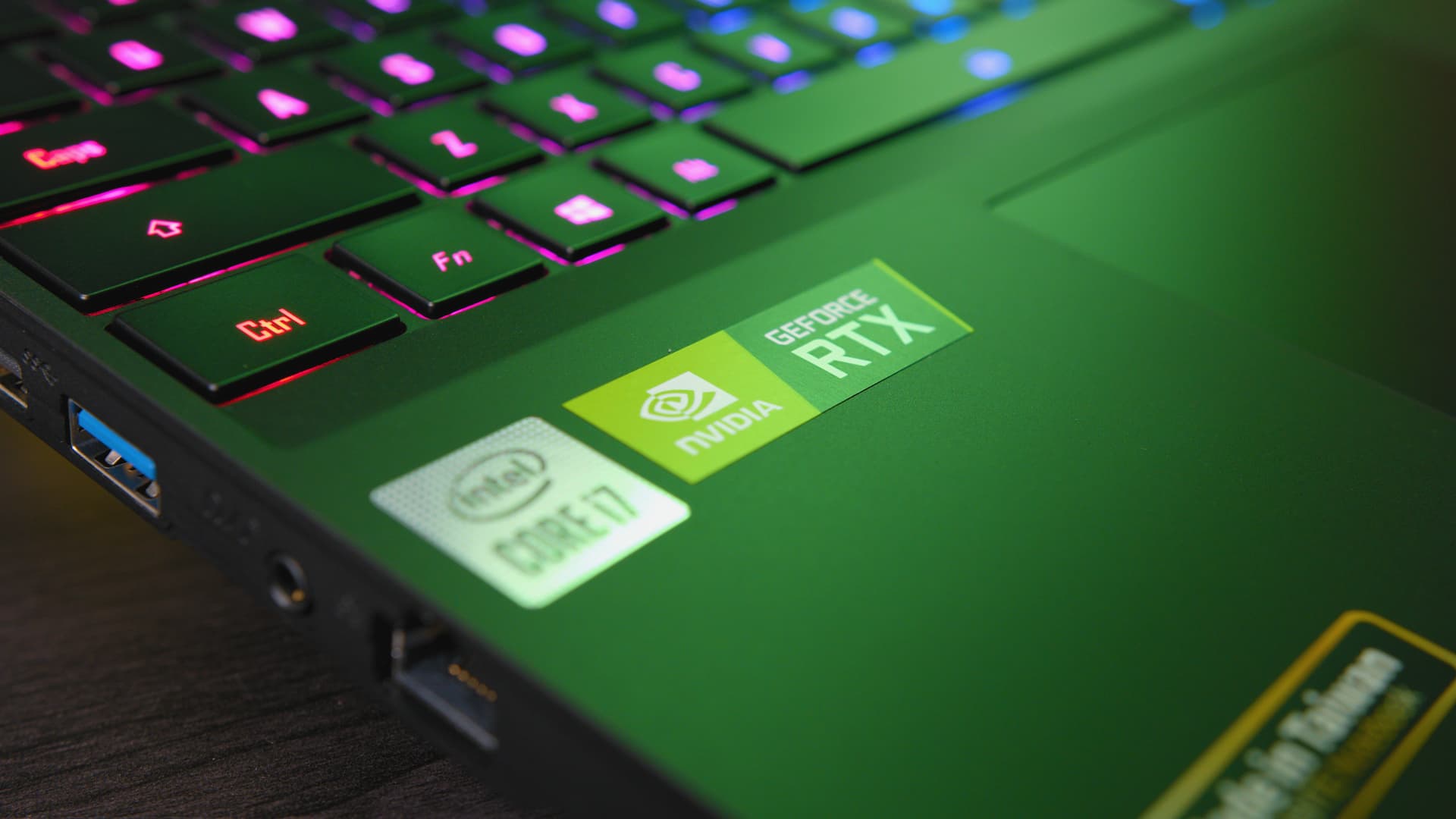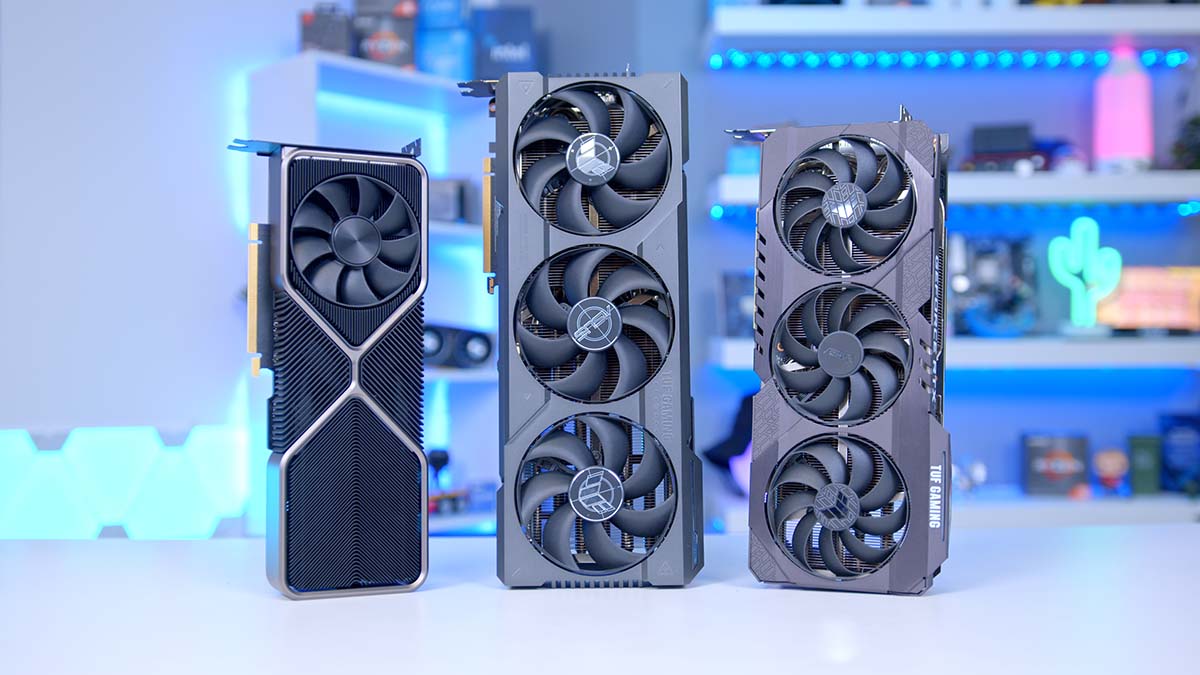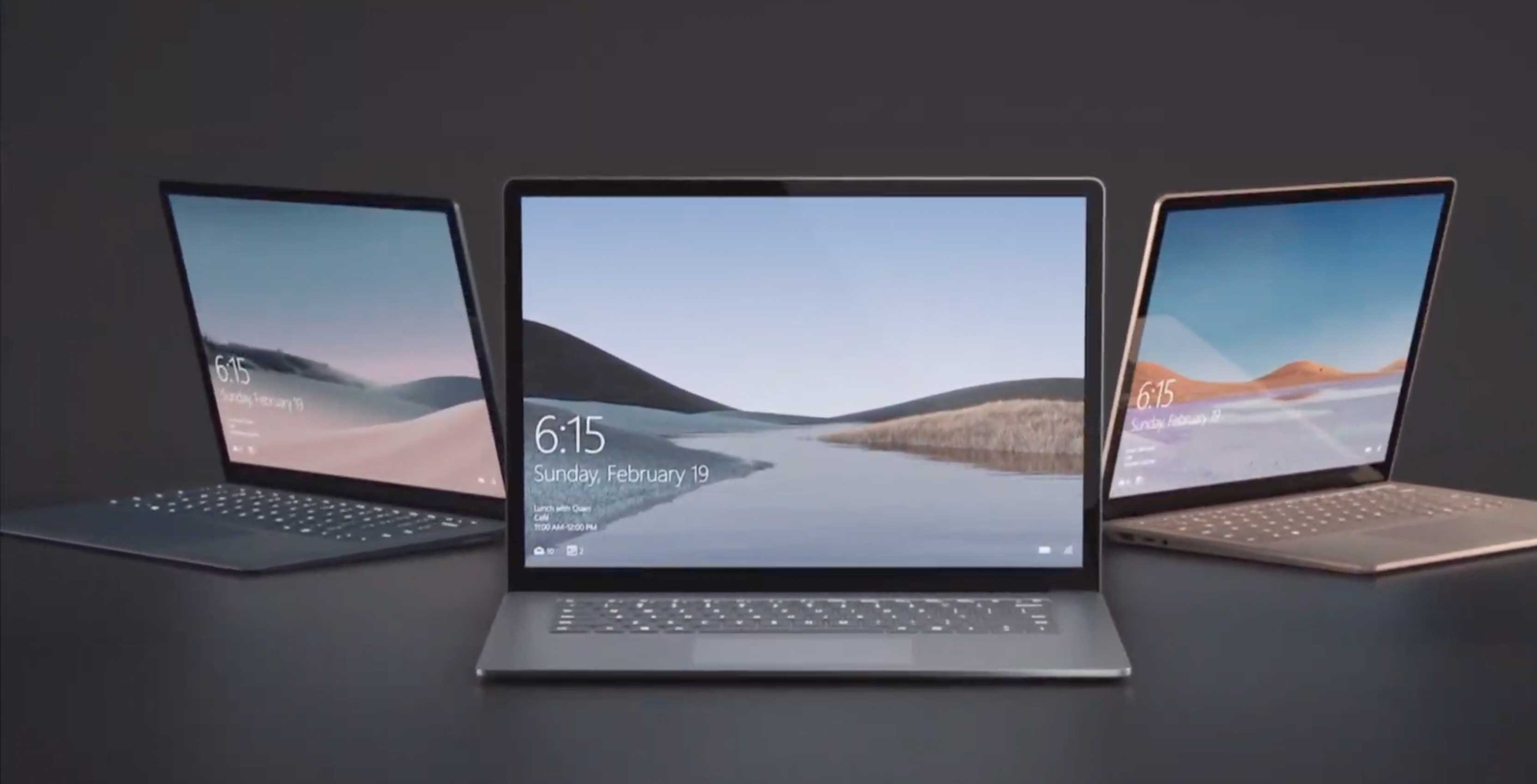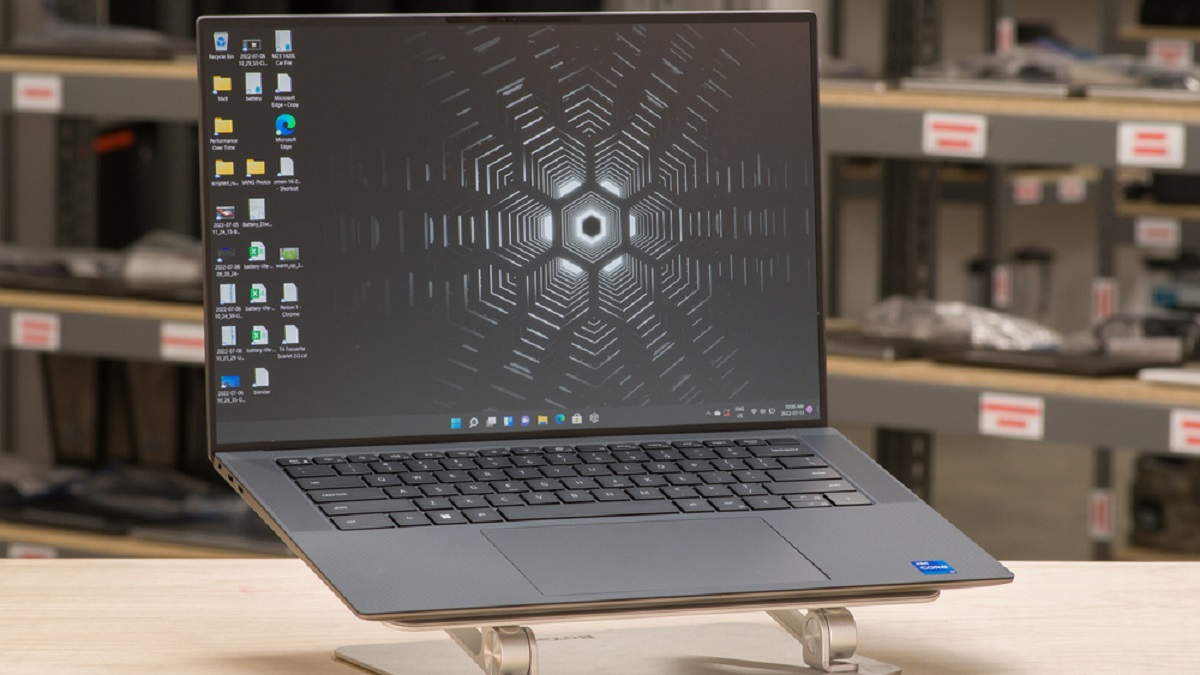Introduction
When it comes to enhancing the visual capabilities of a computer, a discrete graphics card plays a pivotal role. Whether you’re a gamer looking for enhanced gaming performance or a graphic designer seeking smooth rendering of high-definition images, a discrete graphics card can be a game-changer.
A discrete graphics card, also known as a dedicated graphics card, is a separate component from the computer’s main processor that is solely focused on handling graphics-related tasks. Unlike integrated graphics, which are integrated into the computer’s CPU, a discrete graphics card has its own dedicated memory and processing power, allowing it to handle complex graphical calculations with ease.
With a discrete graphics card, you can expect improved performance, smoother gameplay, faster rendering of high-resolution images and videos, and the ability to run demanding applications seamlessly. This article will delve into the world of discrete graphics cards, exploring their benefits, drawbacks, considerations for choosing one, installation and compatibility issues, proper maintenance tips, and common troubleshooting techniques.
So, whether you’re a tech enthusiast looking to build a high-performance gaming rig or a professional in need of a graphics powerhouse for your work, understanding the importance of a discrete graphics card is crucial. Let’s dive deeper into this topic and discover why a discrete graphics card is a must-have component for any computer system that demands top-notch graphical performance.
Definition of a Discrete Graphics Card
A discrete graphics card, sometimes referred to as a dedicated graphics card or GPU (Graphics Processing Unit), is a separate expansion card that is designed to handle all the graphics-related tasks of a computer. It is an essential component for users who require high-quality graphics performance, such as gamers, video editors, 3D designers, and professionals working with graphic-intensive applications.
Unlike integrated graphics, which are integrated into the computer’s central processing unit (CPU), a discrete graphics card operates independently and has its own dedicated resources, including its own processor, memory, and cooling system.
The main purpose of a discrete graphics card is to offload the heavy graphical processing tasks from the CPU, allowing it to focus on other computations. This separation of graphics processing power enables the graphics card to handle complex calculations, such as rendering high-resolution images, running demanding games, and processing video effects, with greater efficiency and speed.
Discrete graphics cards are equipped with their own memory or VRAM (Video Random Access Memory), which allows for faster access to textures, graphics data, and instructions. The amount and speed of VRAM can significantly impact the performance of a graphics card, especially when dealing with high-resolution textures and running multiple displays simultaneously.
These graphics cards also come with advanced features, such as hardware acceleration for video decoding and encoding, which enables smoother playback of high-definition videos, and support for technologies like NVIDIA CUDA or AMD Stream, which can be utilized for accelerating certain computational tasks, such as machine learning or video rendering.
Overall, a discrete graphics card is a crucial component for those looking to enhance their computer’s graphical performance. Whether it’s for gaming, multimedia creation, or professional graphics work, a discrete graphics card provides the necessary horsepower to deliver visually stunning and immersive experiences.
How Does a Discrete Graphics Card Differ from an Integrated Graphics Card?
While both discrete and integrated graphics cards serve the purpose of rendering graphics on a computer, they differ significantly in terms of performance, capabilities, and design.
An integrated graphics card is typically built into the computer’s central processing unit (CPU) or motherboard. It shares system memory with the CPU and relies on the CPU’s processing power for graphics-related tasks. Integrated graphics cards are commonly found in entry-level computers and laptops, where power consumption and cost are prioritized over high-performance graphics capabilities.
In contrast, a discrete graphics card is a separate component that is dedicated solely to handling graphics-related tasks. It has its own dedicated graphics processing unit (GPU), which is specifically designed for delivering high-performance graphics. Discrete graphics cards come with their own dedicated memory, typically in the form of video random access memory (VRAM), ensuring faster access to graphics data and textures.
The major advantage of a discrete graphics card over an integrated one is its sheer power and performance. Discrete graphics cards are equipped with more powerful GPUs and larger VRAM capacities, allowing them to handle resource-intensive tasks such as gaming, 3D rendering, and video editing with ease. They can generate higher frame rates and deliver smoother visuals, resulting in a more immersive and enjoyable user experience.
Another significant difference between the two types of graphics cards is the ability to upgrade. Since integrated graphics are integrated into the CPU or motherboard, they cannot be upgraded independently. On the other hand, discrete graphics cards are separate components that can be easily removed and upgraded to newer and more powerful models, providing users with flexibility and the ability to stay up to date with the latest advancements in graphics technology.
Furthermore, discrete graphics cards offer additional features and technologies that are not available with integrated graphics. These features include advanced shading techniques, support for multiple monitors, hardware acceleration for video decoding and encoding, and compatibility with gaming-specific technologies like NVIDIA G-Sync or AMD FreeSync, which synchronize the refresh rate of the monitor with the GPU’s frame rate, resulting in smoother gameplay with reduced stuttering and tearing.
In summary, a discrete graphics card differs from an integrated graphics card in terms of performance, upgradeability, and features. Its dedicated GPU, dedicated VRAM, and advanced capabilities make it the go-to choice for demanding tasks that require top-notch graphics performance, including gaming, multimedia creation, and professional graphics work.
Advantages of a Discrete Graphics Card
A discrete graphics card offers several advantages over integrated graphics, making it an essential component for users seeking high-performance graphics capabilities. Here are some of the key benefits of having a discrete graphics card:
1. Enhanced Performance: One of the primary advantages of a discrete graphics card is its ability to deliver superior performance compared to integrated graphics. With a dedicated graphics processing unit (GPU) and its own dedicated video random access memory (VRAM), a discrete graphics card can handle resource-intensive tasks such as gaming, 3D rendering, and video editing with ease. This results in smoother gameplay, faster rendering times, and overall improved graphics performance.
2. Improved Visual Quality: Discrete graphics cards are designed to produce high-quality visuals, with better texture details, realistic lighting effects, and smooth anti-aliasing. They can handle higher resolutions and deliver sharper and more vibrant images, enhancing the overall visual experience in gaming, multimedia, and graphic design applications.
3. Support for Multiple Displays: Many discrete graphics cards come with the ability to connect and drive multiple displays simultaneously. This is particularly useful for professionals working with multiple monitors, as it allows for increased screen real estate and better multitasking capabilities. Whether you’re a designer, video editor, or stock trader, the ability to have multiple displays can significantly enhance your productivity.
4. Gaming Performance: For gamers, a discrete graphics card is a must-have component. It provides the necessary horsepower to run the latest games at higher frame rates, enabling smoother and more immersive gameplay. Discrete graphics cards also support gaming-specific technologies, such as NVIDIA’s G-Sync or AMD’s FreeSync, which synchronize the refresh rate of the monitor with the GPU’s frame rate, reducing screen tearing and stuttering.
5. Upgradeability: Another advantage of a discrete graphics card is its upgradeability. Unlike integrated graphics, which are integrated into the CPU or motherboard and cannot be upgraded independently, a discrete graphics card can be easily removed and replaced with a newer model. This flexibility allows users to stay up to date with the latest graphics technologies and ensures that their system remains capable of handling future graphics-intensive applications.
6. Hardware Acceleration: Discrete graphics cards often come with specialized hardware acceleration for tasks such as video decoding and encoding. This offloads these tasks from the CPU and allows for smoother playback of high-definition videos and faster encoding times, making them ideal for video editing enthusiasts and content creators.
Overall, a discrete graphics card offers superior performance, improved visual quality, support for multiple displays, enhanced gaming capabilities, upgradeability, and specialized hardware acceleration. Whether you’re a gamer, a graphics professional, or someone who values top-notch graphics performance, investing in a discrete graphics card can greatly enhance your computing experience.
Disadvantages of a Discrete Graphics Card
While a discrete graphics card brings many advantages, it is essential to consider its potential drawbacks before making a purchasing decision. Here are some of the disadvantages associated with using a discrete graphics card:
1. Cost: Discrete graphics cards can be costly, especially those designed for high-performance gaming or professional graphics work. The latest graphics cards with advanced features and technologies often come with a significant price tag, making them a more substantial investment compared to integrated graphics. This can be a limiting factor for those on a tight budget or casual users who may not require the highest levels of graphics performance.
2. Power Consumption: Discrete graphics cards consume more power compared to integrated graphics. Their dedicated processing units and larger VRAM capacities require additional power to operate efficiently. This increased power consumption can result in higher electricity bills and may require a higher wattage power supply unit (PSU) to accommodate the power requirements of the graphics card.
3. Heat Generation and Cooling: Due to their higher power consumption, discrete graphics cards tend to generate more heat during operation. Proper cooling is crucial to maintaining optimal performance and prolonging the lifespan of the graphics card. This may require additional cooling solutions, such as fans or liquid cooling, which can add complexity and cost to the overall system setup.
4. Compatibility: Compatibility can be a concern when choosing a discrete graphics card. Not all motherboards or computer systems are compatible with every graphics card available on the market. It is important to ensure that the graphics card is compatible with the motherboard’s PCIe slot and that the power supply unit can provide adequate power for the card. Additionally, some compact or low-profile systems may have limited physical space, making it challenging to fit larger graphics cards.
5. Upgradability: While upgradeability is generally considered an advantage of discrete graphics cards, it can also present some challenges. As new graphics card models are released, compatibility with older motherboards or operating systems may become an issue. Upgrading to a newer graphics card may require additional upgrades or replacements of other components, such as the power supply unit or motherboard.
6. Noise: Some high-performance graphics cards can produce noticeable fan noise, especially when under heavy load. This noise can be distracting, particularly for users who value a quiet computing environment. Choosing graphics cards with efficient cooling systems or considering aftermarket cooling solutions can help mitigate this issue.
While the above disadvantages are worth considering, they should not overshadow the significant benefits offered by a discrete graphics card. Understanding these drawbacks allows users to make informed decisions about whether a discrete graphics card aligns with their specific needs, budget, and system requirements.
Factors to Consider When Choosing a Discrete Graphics Card
Choosing the right discrete graphics card for your needs requires careful consideration of several factors. Here are some key factors to keep in mind when selecting a graphics card:
1. Performance Needs: Determine the intended use of the graphics card and assess your performance requirements. Gaming, graphic design, and video editing tasks demand different levels of performance. Consider factors such as clock speed, number of cores, and memory bandwidth to ensure the graphics card can handle your specific workload.
2. Budget: Set a budget that aligns with your financial capabilities. Graphics cards vary widely in price, and it’s important to find a balance between your desired performance and your budget constraints.
3. Power Requirements: Check the power supply unit (PSU) requirements of the graphics card. Ensure your computer’s PSU can provide enough power to handle the graphics card’s power demands. Upgrading the PSU may be necessary if it doesn’t meet the requirements.
4. Compatibility: Verify compatibility with your system. Check if the graphics card is compatible with your motherboard’s PCI Express (PCIe) slot and if it fits within the physical dimensions of your computer case. Additionally, consider any operating system requirements and driver compatibility.
5. Graphics Memory: Pay attention to the amount and type of video memory (VRAM) on the graphics card. Higher amounts of VRAM are beneficial for handling high-resolution textures and running multiple displays. DDR6 or GDDR6 memory offers faster speeds and improved performance compared to previous generations.
6. Ports and Connectivity: Ensure the graphics card has the necessary display outputs to connect to your monitor(s) or other devices. Check for the presence of HDMI, DisplayPort, or DVI ports, based on your specific needs.
7. Cooling Solutions: Assess the cooling solution employed by the graphics card. Look for models with efficient cooling systems, such as multiple fans or liquid cooling, to prevent overheating and maintain optimal performance. Consider your existing system’s cooling capabilities and whether additional cooling may be required.
8. Brand and Support: Research graphics card manufacturers and consider their reputation for quality and reliability. Look for manufacturers with good customer support and regular driver updates to ensure ongoing compatibility and performance improvements.
9. Future Upgradability: Consider future upgradability options. Depending on your needs, you may want to invest in a graphics card that supports technologies like NVIDIA SLI or AMD CrossFireX, allowing you to add a second card for increased performance in the future.
10. Reviews and Recommendations: Read reviews and seek recommendations from trusted sources or forums. User reviews and professional insights can provide valuable information about the performance, reliability, and features of different graphics cards.
By carefully considering these factors, you can ensure that the discrete graphics card you choose meets your specific performance needs, budget, compatibility requirements, and provides the necessary features for your intended usage.
Installation and Compatibility
Installing a discrete graphics card requires proper consideration of compatibility and a step-by-step approach. Here’s a guide to help you with the installation process:
1. Check Compatibility: Before purchasing a graphics card, ensure it is compatible with your motherboard. Check the specifications of your motherboard to verify the type of PCI Express (PCIe) slot it has, as the graphics card needs to fit into that slot. Additionally, make sure your power supply unit (PSU) can supply enough power to the graphics card.
2. Prepare the System: Before installation, ensure your computer is powered off and unplugged. Remove the case cover to access the PCIe slot. Take note of any existing graphics cards or additional components that may obstruct the installation or require removal.
3. Install the Graphics Card: Gently insert the graphics card into the appropriate PCIe slot on the motherboard. Apply firm, even pressure, ensuring that the card is securely seated. Use screws or mounting brackets to secure the card to the case, if applicable. Connect any necessary power cables from the PSU to the graphics card.
4. Connect Displays: Depending on your setup, connect your monitor(s) to the appropriate ports on the graphics card. Ensure the cables are securely plugged in and tightened to avoid any display issues.
5. Power On and Install Drivers: Power on your computer and proceed to install the drivers for the graphics card. The drivers can typically be downloaded from the manufacturer’s website. Follow the on-screen instructions to complete the driver installation process.
6. BIOS Configuration (if needed): In some cases, you may need to enter the computer’s BIOS settings to disable the integrated graphics or change the primary display adapter to the discrete graphics card. Consult your motherboard’s manual or manufacturer’s website for instructions on configuring the BIOS settings.
7. Test and Troubleshoot: Once the drivers are installed, test the graphics card’s functionality by running graphic-intensive applications or games. Monitor the temperatures and ensure proper cooling of the graphics card. In case of any issues, consult the manufacturer’s troubleshooting guides or seek assistance from customer support if necessary.
8. Future Upgrades and Updates: Over time, it may be necessary to update the graphics card drivers for improved performance and compatibility with new software or games. Regularly check for driver updates from the manufacturer’s website or use their provided software for automatic updates.
It is important to consult the specific installation instructions provided with your graphics card and motherboard, as the process may vary slightly depending on the model and manufacturer. Taking the necessary precautions and following these steps will help ensure a smooth installation and compatibility of your discrete graphics card.
Proper Maintenance and Cooling for Discrete Graphics Cards
Maintaining proper cooling for your discrete graphics card is crucial to ensure optimal performance and longevity. Here are some important maintenance tips to keep in mind:
1. Dust and Debris: Regularly clean your computer system, including the graphics card, to remove accumulated dust and debris. Dust can cause overheating and hinder airflow, leading to reduced performance or even potential damage. Use compressed air or a soft brush to carefully clean the fans, heatsink, and surrounding areas.
2. Adequate Airflow: Ensure that your computer case has proper airflow to cool the graphics card. Make sure that the case fans are working effectively and that there is no obstruction to the airflow. Consider adding additional fans or using liquid cooling solutions for optimal cooling performance.
3. Temperature Monitoring: Use software monitoring tools to keep track of the temperature of your graphics card. If the temperatures are consistently high, it may indicate inadequate cooling or a need for cleaning. Adjust the fan speed or consider additional cooling solutions if necessary.
4. Overclocking and Fan Speed: If you plan to overclock your graphics card, ensure that you have sufficient cooling measures in place. Increased clock speeds can generate more heat, so it is important to adjust the fan speed or consider aftermarket cooling solutions to maintain safe operating temperatures.
5. Proper Power Supply: Ensure that your power supply unit (PSU) can handle the power demands of your graphics card. Insufficient power supply can cause instability and potential damage to the card. Consider upgrading the PSU if needed.
6. Driver Updates: Stay up to date with the latest graphics card drivers provided by the manufacturer. Driver updates often include performance optimizations, bug fixes, and improved compatibility. Regularly check for updates and install them to ensure optimal performance.
7. System Cleaning: In addition to cleaning the graphics card, keep the rest of your system clean as well. A clean system ensures efficient airflow and reduces the risk of overheating. Regularly clean the CPU cooler, case fans, and other components to maintain optimal cooling performance.
8. Avoid Overheating: Be cautious of running your graphics card at excessively high temperatures for extended periods. Prolonged exposure to high temperatures can reduce the lifespan of components. If you consistently experience high temperatures, consider adjusting fan speeds, optimizing airflow, or investing in better cooling solutions.
By following these maintenance tips, you can ensure that your discrete graphics card remains in optimal condition, providing stable performance and longevity. Proper cooling and regular maintenance will help you avoid potential issues and enjoy the full capabilities of your graphics card for years to come.
Common Issues and Troubleshooting for Discrete Graphics Cards
While discrete graphics cards are typically reliable, there can be occasional issues that arise. Here are some common problems that users may encounter with their discrete graphics cards and potential troubleshooting steps:
1. Graphics Driver Issues: Graphics driver conflicts or outdated drivers can cause various issues, including display glitches, crashes, or poor performance. Ensure that you have the latest drivers installed for your graphics card by visiting the manufacturer’s website. Uninstalling and reinstalling the drivers or performing a clean installation can often resolve driver-related problems.
2. Overheating: Excessive heat can lead to performance degradation, system instability, or even graphics card failure. Clean dust and debris from the cooling components, ensure proper airflow in your system, and check that the fans on the graphics card are functioning correctly. If the issue persists, consider adjusting fan speeds, optimizing case ventilation, or installing additional cooling solutions, such as aftermarket GPU coolers or liquid cooling.
3. Display Artifacts: Display artifacts appear as strange graphical anomalies, such as flickering screens, weird colors, or random lines. This can be caused by faulty connections, incompatible display drivers, improper overclocking, or insufficient power supply. Check the cable connections and reinstall display drivers. If overclocking, revert to default settings, and ensure that your PSU can provide sufficient power for the graphics card.
4. System Crashes or Freezes: If your system crashes or freezes during gaming or other graphically intensive tasks, it may be due to GPU overheating, insufficient power supply, or unstable overclocking. Monitor GPU temperatures and adjust fan speeds or cooling as necessary. Check the PSU’s power output and consider increasing wattage if required. If you have overclocked your graphics card, try returning it to stock settings.
5. Compatibility Issues: Incompatibility between hardware components or software can lead to graphics card issues. Ensure that your graphics card is compatible with your motherboard and other system components. Check for BIOS updates for your motherboard to ensure compatibility. Verify that you have the latest software updates, especially for operating systems and graphics-related software.
6. No Video Output: If there is no video output from the graphics card, double-check that it is properly seated in the PCIe slot and that all power connections are secure. Verify that the monitor is connected to the correct ports on the graphics card and ensure the monitor is functional. Try testing the graphics card in another system or testing a known working graphics card in your system to isolate the issue.
7. Blue Screen of Death (BSOD): A BSOD caused by a graphics card can occur due to incompatible drivers, hardware conflicts, or faulty graphics card. Update or reinstall graphics drivers to ensure compatibility. Check for conflicts with other hardware components and resolve as necessary. If the issue persists, test the graphics card in a different system or contact the manufacturer for support.
8. System Instability: Graphics card instability can result in system crashes, freezes, or general instability. Check that the graphics card is receiving adequate power from the PSU. Consider adjusting fan speeds, optimizing airflow, or applying stable overclocking settings within safe limits. If the system remains unstable, it may be a sign of a faulty graphics card requiring replacement or professional assistance.
If you experience any issues with your discrete graphics card, it is essential to approach troubleshooting with patience and caution. Start by checking the most common causes of the problem, such as drivers, overheating, and power supply issues. If necessary, seek guidance from the graphics card manufacturer’s support resources or consult with a professional.
Conclusion
Discrete graphics cards play a vital role in delivering high-performance graphics for a wide range of applications, from gaming to professional content creation. They offer numerous advantages over integrated graphics, including enhanced performance, improved visual quality, support for multiple displays, and the ability to handle resource-intensive tasks with ease.
When choosing a discrete graphics card, factors such as performance needs, budget, compatibility, and future upgradability should be carefully considered. Proper installation, maintenance, and cooling are crucial to ensure the longevity and optimal performance of the graphics card. Regular cleaning, monitoring temperatures, and ensuring adequate airflow are essential maintenance practices to keep the card running smoothly.
Common issues such as driver conflicts, overheating, display artifacts, and compatibility problems can be resolved through troubleshooting steps, including updating drivers, optimizing cooling, checking connections, and addressing power supply concerns.
In conclusion, a discrete graphics card is a valuable component for those who demand high-quality graphics performance. By understanding the benefits, drawbacks, and maintenance considerations, you can make an informed decision when selecting a discrete graphics card that will best suit your specific needs and provide an enhanced visual experience that elevates your computer usage to new heights.







